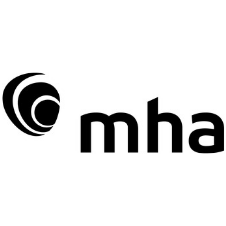UK legal sector’s renewed focus on profitability counters sporadic fee income growth
MHA’s Legal Benchmarking Report reveals how the changing legal landscape and a fall in fee income has had a positive impact on many practices, prompting them to scrutinise their profitability drivers and reduce expenditure, resulting in improved profit per equity partner figures.
Growth in start-ups and niche ‘boutique’ practices
Fee income trends are a mixed bag – only two categories achieve a significant rise
All practice sizes – except one – report a marked improvement in Profit per Equity Partner (PEP)
Significant decrease in partner and practice funding
Lock up levels remain static, although smaller partner firms struggle to gain control
Firms under pressure to be more agile, increase investment in IT and offer flexible working patterns
The latest annual Legal Benchmarking Report from MHA, the UK-wide group of accountancy and business advisory firms, reveals the ferocity of competition between practices and how firms can build their financial resilience.
It shows how the continually evolving legal landscape is driving down income growth, forcing firms to concentrate on profits and margins, and consider ways to future-proof their businesses and combat succession issues.
The report assesses sector demographics, over the last 12 months there’s been a growth in start-ups and niche boutique practices (fuelled by decent fees and very low overheads) and small practices with succession issues looking to be ‘acquired’. Mid-tier firms, it appears, are in merger discussions and competition from the ‘big four’ continues unabated. It concludes ‘the large are getting larger, the small are getting smaller and the gap between the two is becoming ever more distinct’.
Growth in total fee income was sporadic – only achieved by sole trader practices (12%) and 5-10 partner firms (9%). Mid-tier practices of 11-25 partners witnessed minor growth at 0.1%, while larger firms of 25+ partners and smaller 2-4 partner practices saw income falls of 3% and 2% respectively.
Changes in fee income per fee earner levels mirrored these findings; for sole trader practices and 5-10 partner firms it grew by 10% and 0.6% respectively, mid-tier firms saw a drop of 1% and 2-4 partner firms and larger practices witnessed falls of 12%.
While the average income for a fee earner was not dissimilar to last year, the income range is now wider – £121k to £170k, as opposed to £136k to £169k. Although practices are split on whether to follow a growth or consolidation strategy, it’s clear there’s a renewed focus on profitability.
The PEP for every firm category increased in excess of £15,000 per partner, except 11-25 partner firms where there was a 3% fall, evidencing a significant improvement on the previous year where profits were impacted by a hard market and increased wage demands. The report concedes it still remains ‘tough’ for smaller practices, confirming that PEP for sole practitioner firms now exceeds the PEP for 2-4 partner firms.
All practice sizes, bar 25+, rallied when it came to their total net profit percentages. Sole traders experienced the biggest leap – from 12% in 2017 to 23% in 2018; 2-4 and 11-25 partner firms managed a sluggish 1% growth on the previous year (16% and 25% respectively), 5-10 partner firms reported a 2% growth to 18%, while 25+ practices suffered a 1% drop to 24%.
Total funding per equity partner continued a downward trend; in 2018 it ranged from £25,000 for the smallest firms to £139,000 for larger firms with 25+ partners, a marked difference from the £42,000-£228,000 parameters reported in 2017.
Externally-sourced funding was similarly depleted – large firms witnessed a drop from 65% to 32% and 11-25 partner firms, a fall from 26% to 18%. Prudence appears to be a key priority; borrowing by larger firms from banks topped £95,000 in 2018, down from £112,000 and £228,000 in previous years.
The actual capital invested during the year varied depending on the size of the firm, however larger firms and practices with 5-10 partners saw increased levels of capital invested by their equity partners, suggesting a certain ‘shoring up’ of the business.
Lock up remains static for the majority of practices, at around 120 days, or they’ve achieved a reduction, apart from 2-4 partner firms who still struggle to gain control. Their average lock up figure is now at 130 days, almost 50% higher than five years ago. The smallest practices report a significant lock up improvement of 11 days.
Across the board, employment costs and practice expenses remain consistent with previous years; only the larger practices have seen a significant increase in expenditure compared to income. The parameters for IT spend however, have grown from 1.6% – 2.2% in 2017 to 1% – 3.3% in 2018 – signalling an appetite to maintain secure and robust systems.



